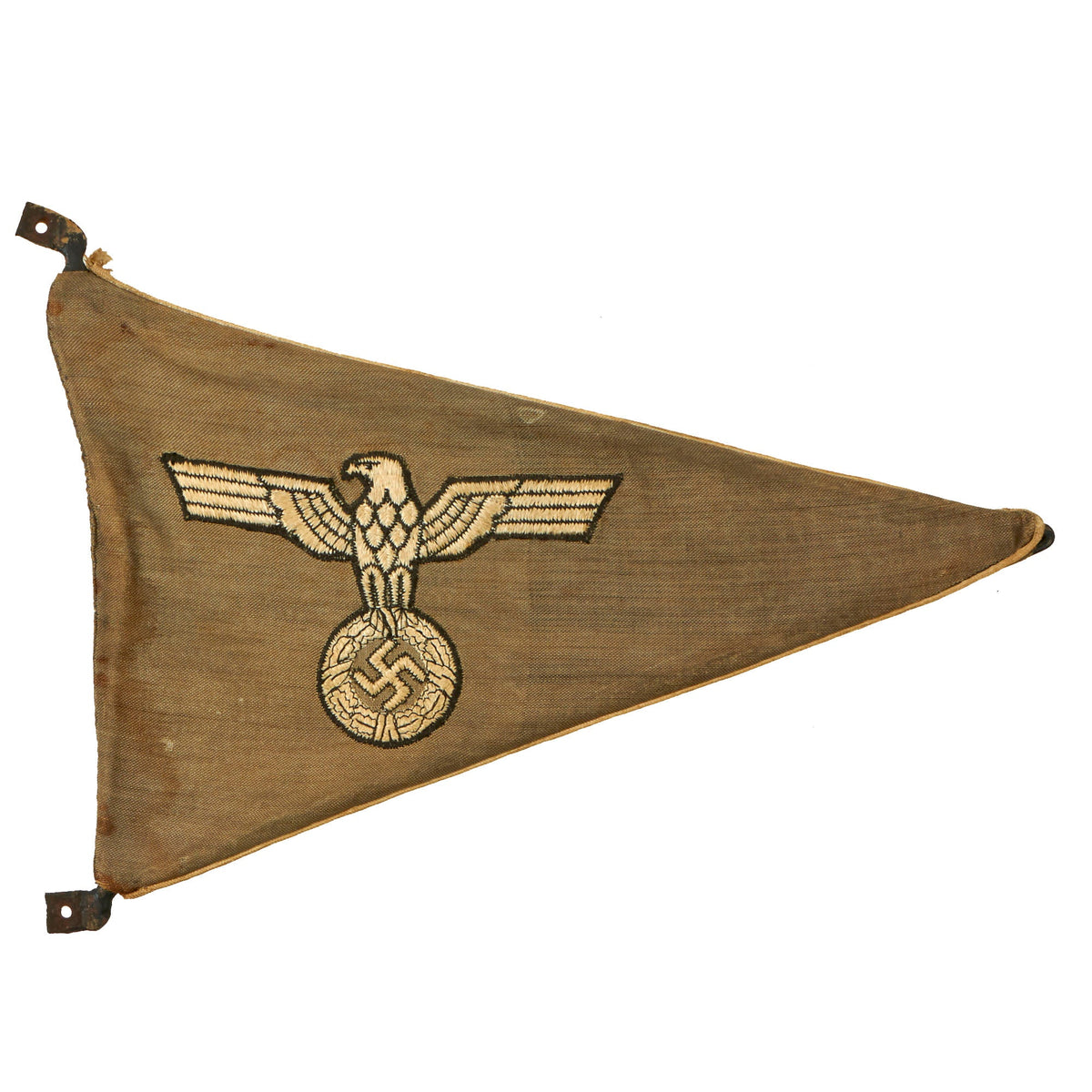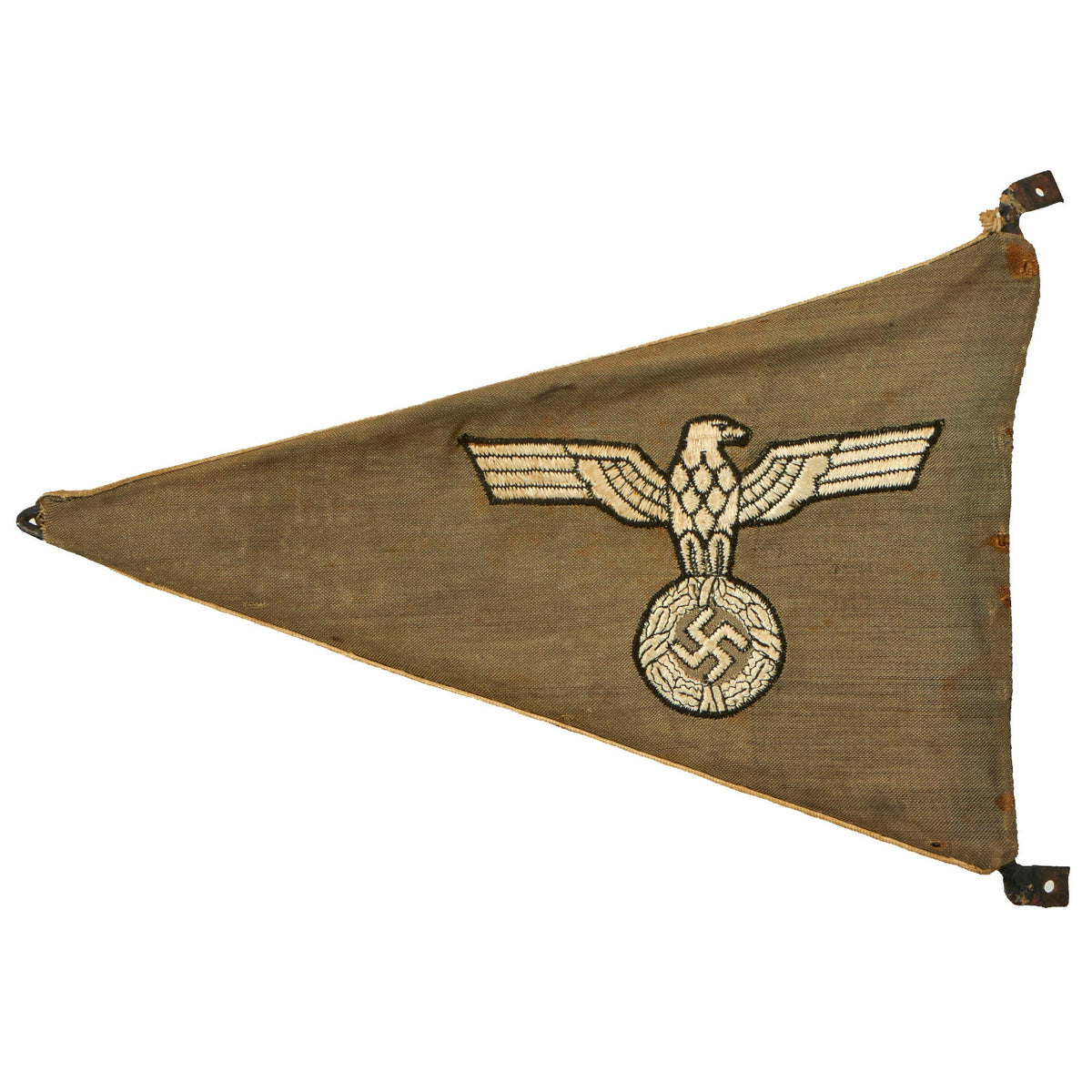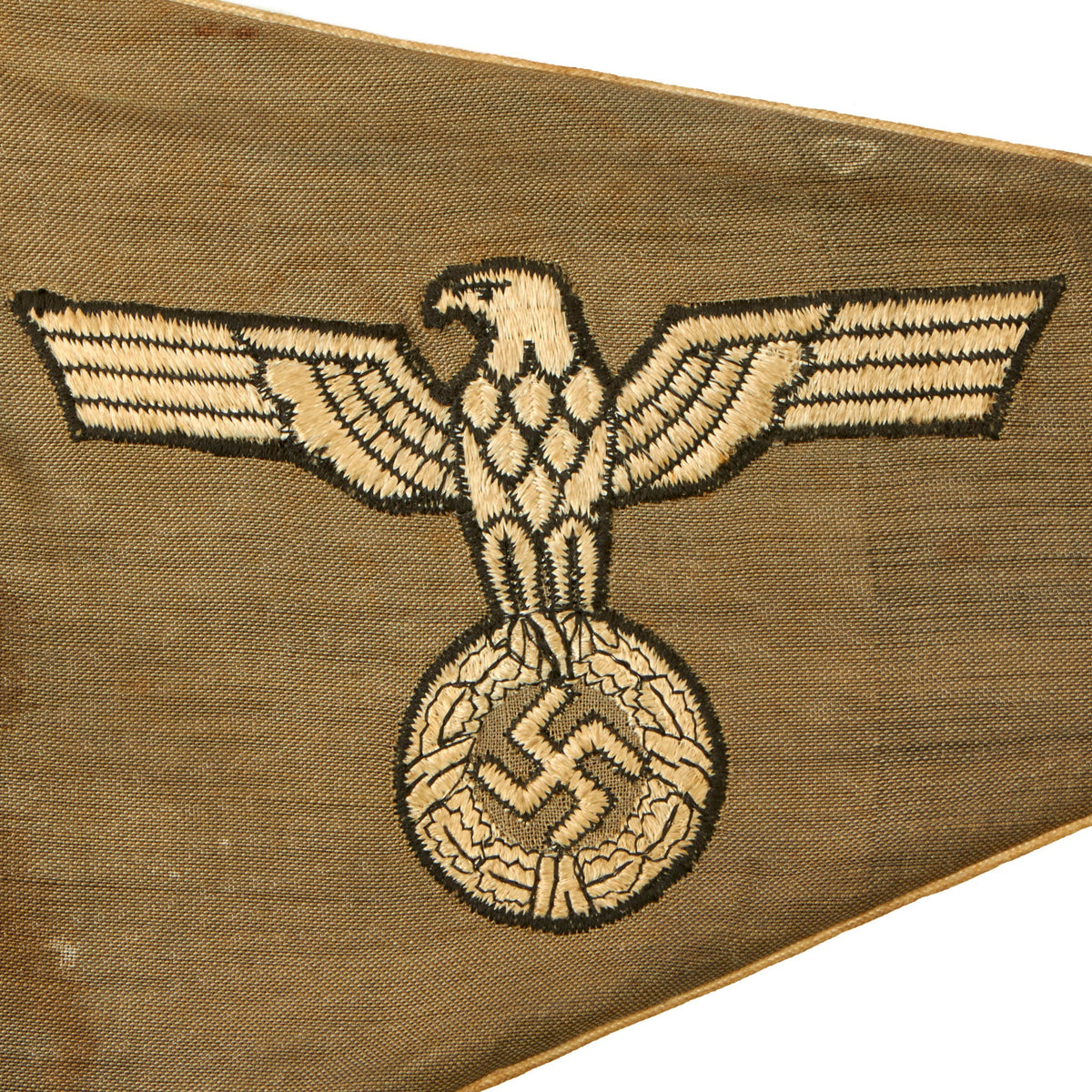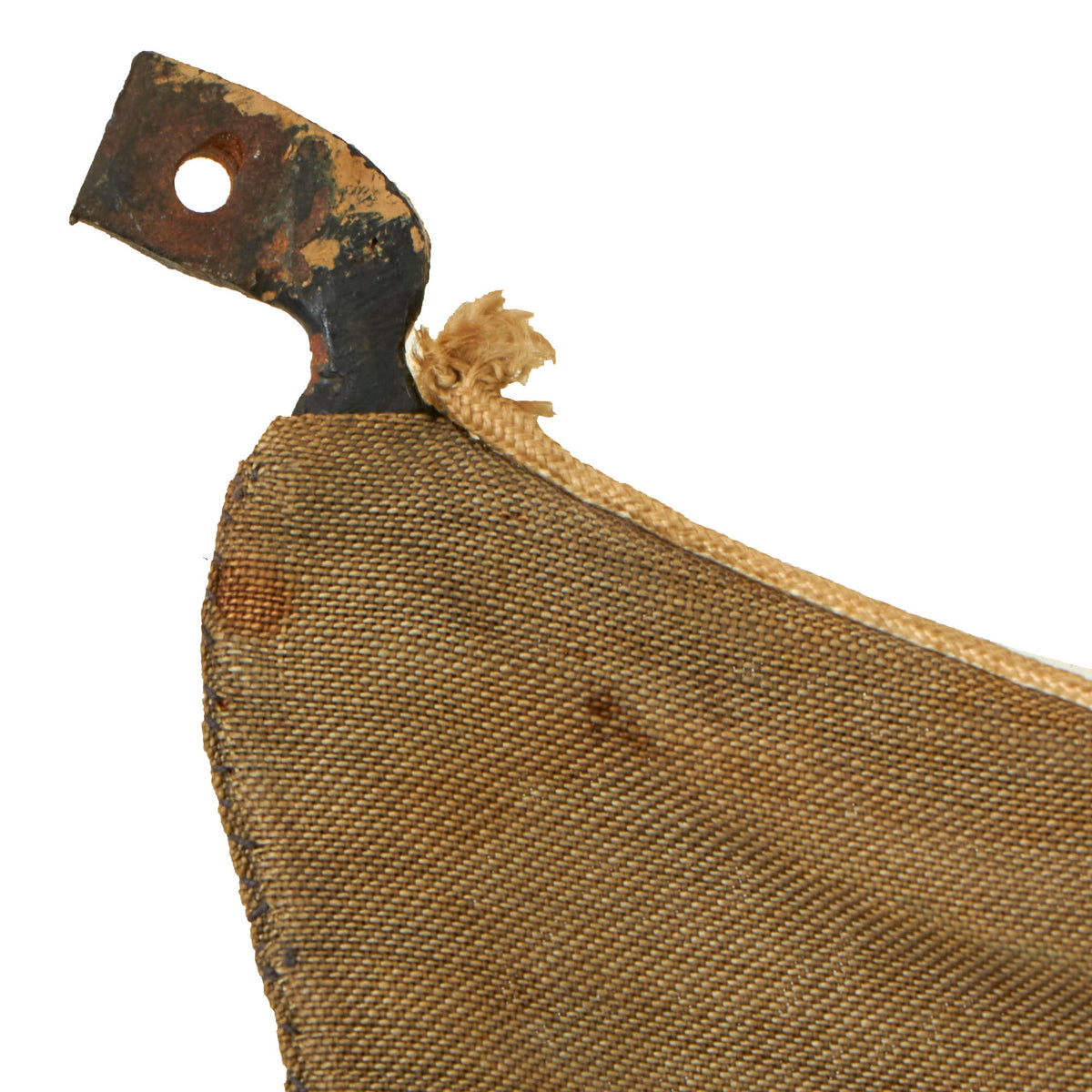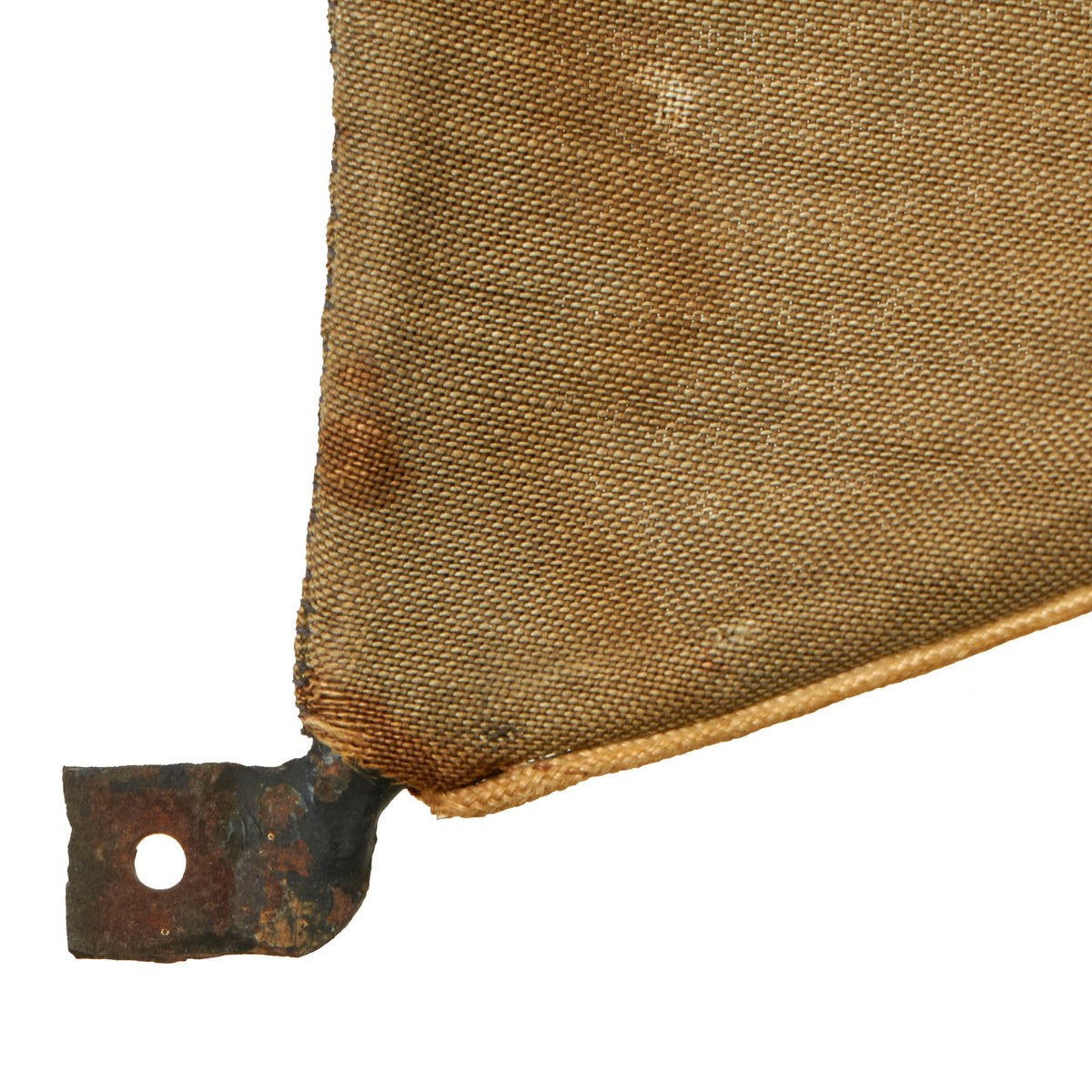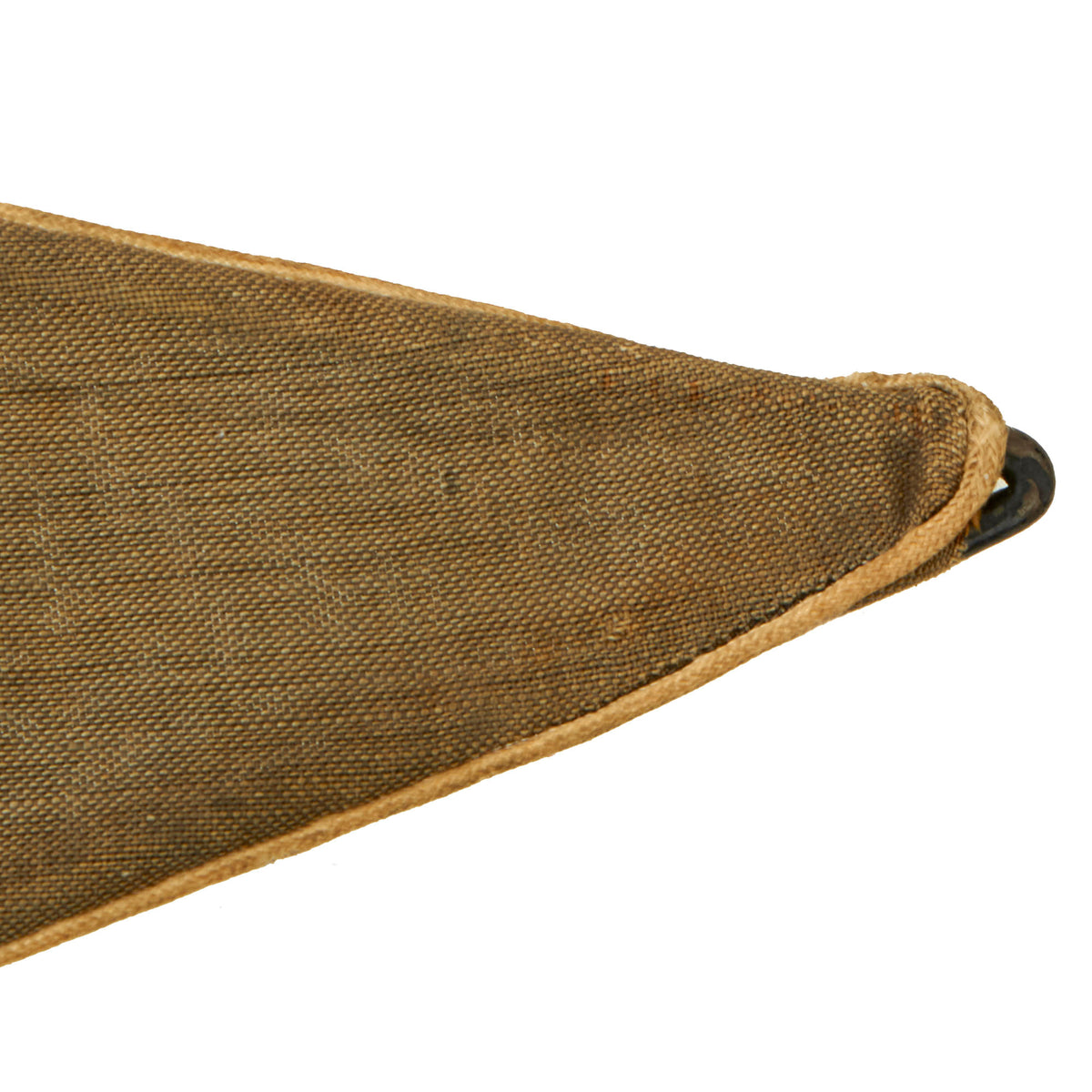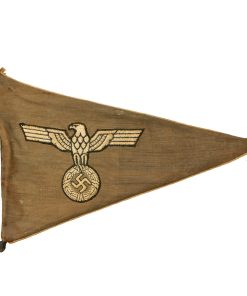Original German WWII Army Heer Officer Rigid Vehicle Staff Car Pennant Flag – 7 1/2″ x 11 3/4″ Original Items
$ 495,00 $ 148,50
Original Item: Only One Available. This is a lovely service used example of a desirable German WWII Army Heer Officer Vehicle Wimpel (Pennant), which would be flown on a small staff attached to the fender of the automobile or other vehicle it was attached to. This example is is made of a magnetic metal frame, which has the fabric pennant stretched over it, with the correct insignia and color.
The pennant displays the standard German WWII Wehrmacht Spread Wing Eagle, perched on top of a wreathed mobile Swas (hook cross). The Insignia is white on a gray background, the correct color for an Army Heer officer. The pennant is double sided, with the same embroidered insignia on both sides. The pennant measures about 7 1/2″ in hoist by 11 3/4″ in fly, and is in very nice “salty” service used condition. There is some staining to the fabric, especially around the hoist side, and there is also a tear on the point where the internal frame is visible. This frame also is somewhat deformed on the hoist side, and has two eyelets on the end where it would be attached to the mount on the vehicle pole.
Highly impressive and loaded with eye appeal, this is sure to make a great addition to any collection!
During the Third Reich and WWII, a wide variety of flags and pennants were used on German cars and vehicles. In the military, vehicle flags and pennants were used to indicate branch or rank, or specific command roles. The various civilian organizations also had vehicle flags and pennants for members of their organization or to denote the vehicles of officers, leaders or people in specific roles. Even political leaders had their own flags which were often rank specific. Some of the flags, especially military ones, were simply printed, and some were machine woven or stitched, while the flags for political leaders and the highest ranking military personnel were more decorative and often elaborately hand embroidered in bullion wire. Some vehicle flags were mass produced, including simple national flag type swas emblem pennants that could have been bought by any patriotic supporter. Others were unique. These flags were attractive souvenirs for GI troops at the end of the war, and are eagerly collected today.
Fast Shipping with Professional Packaging
Thanks to our longstanding association with UPS FedEx DHL, and other major international carriers, we are able to provide a range of shipping options. Our warehouse staff is expertly trained and will wrap your products according to our exact and precise specifications. Prior to shipping, your goods will be thoroughly examined and securely secured. We ship to thousands clients each day across multiple countries. This shows how we're dedicated to be the largest retailer on the internet. Warehouses and distribution centres can be located throughout Europe as well as the USA.
Note: Orders with more than one item will be assigned a processing date depending on the item.
Before shipping before shipping, we'll conduct a thorough inspection of the items you have ordered. Today, the majority of orders will be delivered within 48 hours. The delivery time will be between 3-7 days.
Returns
The stock is dynamic and we cannot completely manage it because multiple stakeholders are involved, including our factory and warehouse. So the actual stock may alter at any time. It's possible that you may not receive your order once the order has been made.
Our policy is valid for a period of 30 days. If you don't receive the product within 30 days, we are not able to issue a refund or an exchange.
You can only return an item if it is unused and in the same state as the day you received it. You must have the item in its original packaging.
Related products
Uncategorized
Armored Burgonet Helmet & Polearm from Scottish Castle Leith Hall Circa 1700 Original Items
Uncategorized
Uncategorized
Band of Brothers ORIGINAL GERMAN WWII Le. F.H. 18 10.5cm ARTILLERY PIECE Original Items
Uncategorized
Uncategorized
Uncategorized
Uncategorized
Uncategorized
Uncategorized
Uncategorized
Uncategorized
Uncategorized
Uncategorized
Uncategorized
Uncategorized
Angolan Rebel 1970s era 60mm Inert Display Mortar from Angolan Civil War Original Items
Uncategorized
